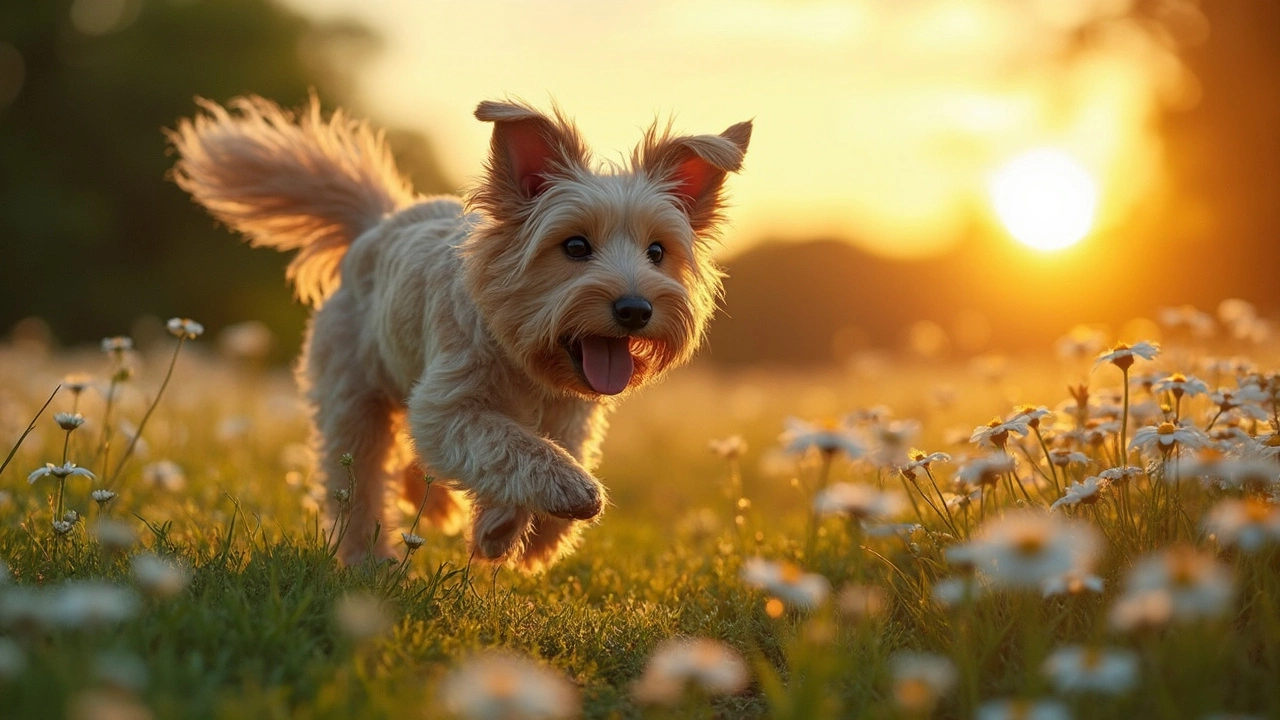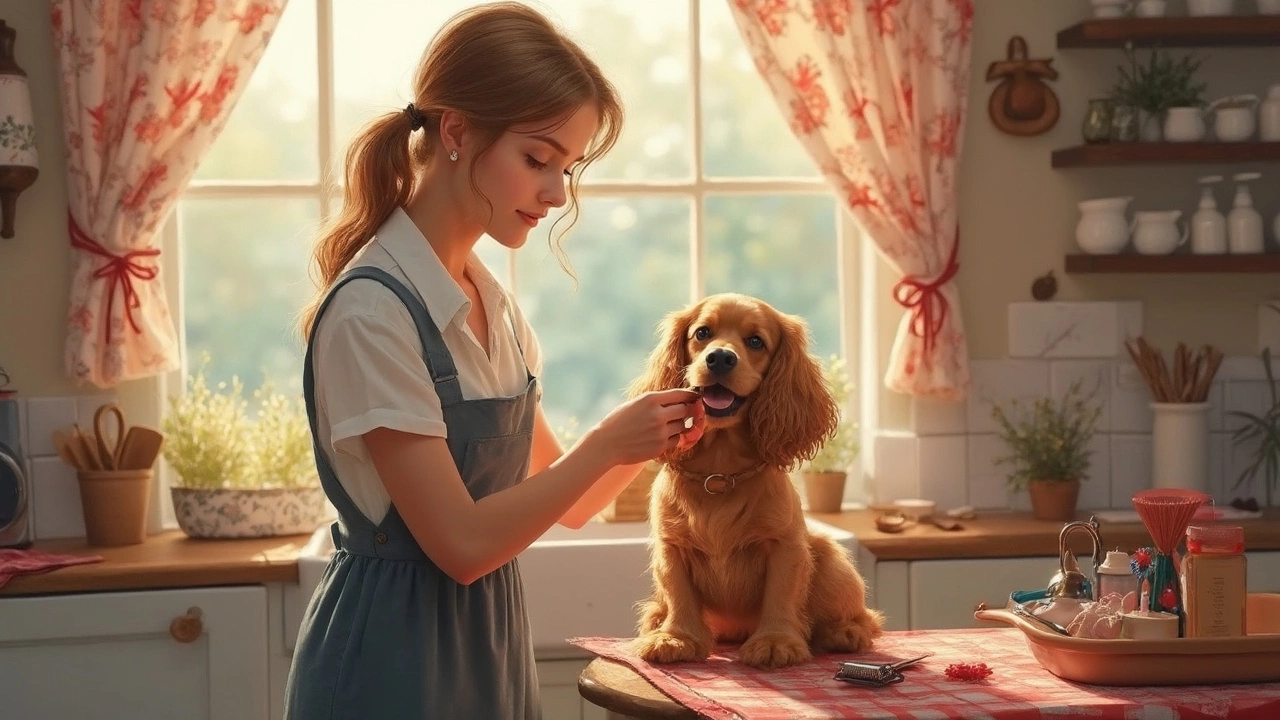Ever thought about taking grooming matters into your own hands, snipping away like a pro on your beloved pooch? Well, hang on a second—before you reach for the scissors, it's super important to know what not to cut when grooming your furry buddy. Trust me, some parts are better left untouched if you want to avoid any painful mishaps or awkward looks.
First up, whiskers! We all know those cute, twitchy things on your dog's muzzle, right? They're not just for show. Cutting your dog's whiskers might seem harmless, but they're actually super crucial for sensing the world around them. Dogs use whiskers to navigate their space and even detect changes in their environment. Snipping them off could leave your pup a bit confused.
- Understanding Your Dog's Unique Coat
- The Role of Whiskers and Why Not to Cut Them
- Paws and Tails: Areas to Approach with Care
- Practical Tips for Safe and Effective Grooming
Understanding Your Dog's Unique Coat
Alright, let's get into the fur-tastic details of your dog's coat. It's not just a cute, cuddly covering; it's an important aspect of their health and comfort. Dogs' coats come in all sorts of textures, lengths, and functions, so knowing your dog's type is key to dog grooming the right way.
Most dog coats fall under three categories: short, medium, and long. But beyond length, there's the texture to think about. Some dogs have a single coat, while others have a double coat. It's this second layer that often causes confusion. Double-coated breeds, like Golden Retrievers or Huskies, have an undercoat that helps regulate their body temperature.
Do not cut the undercoat of double-coated breeds. It might seem like a good way to keep them cool, but it's actually protective for them. Removing it can lead to overheating or skin problems. If your furry friend has a single coat, regular trimming might work, but always be wary of shaving too close to the skin.
Here's a handy table helping identify common coat types:
| Breed | Coat Type |
|---|---|
| Labrador Retriever | Short Double Coat |
| Poodle | Curly Single Coat |
| Shih Tzu | Long Double Coat |
Remember, different breeds have different needs. Know your dog's coat type and approach it with the right tools—like a specific brush that matches their coat type—and with understanding, so grooming becomes a bonding experience instead of a battle.
The Role of Whiskers and Why Not to Cut Them
Whiskers might look like just another bunch of hairs, but they’re actually some of the most vital features on your dog's face. These little feelers have an incredible job, acting like high-tech sensors that help your dog navigate the world. Imagine losing your GPS while driving in a new city; that's what it's like for a dog without whiskers.
Here's the scoop: whiskers, also known as vibrissae, are deeply rooted into a dog's skin and connected to their nervous system. They pick up tiny changes in the air, helping dogs detect objects even in the dark. This makes them essential for everything from playing fetch at night to just getting around the house without bumping into things.
If you’re wondering if all dogs have the same type of whiskers, here's where it gets interesting. Not only do all dogs have them, but breeds that are known for great hunting skills, like terriers and beagles, often rely even more heavily on their whiskers. It's like having an extra set of eyes. And cutting them? That's like putting a blindfold over those eyes.
So, what's the big takeaway here? If you're thinking about trimming whiskers during your dog grooming session—stop right there. Leave them be. Messing with those sleek little strands can make your pup feel disoriented and less confident. Keeping them intact means your dog's sensory toolkit stays fully equipped. Always remember, the goal of grooming at home is to keep your pup comfy and happy, whiskers included!

Paws and Tails: Areas to Approach with Care
When it comes to paws and tails, knowing what not to cut can make a huge difference in your dog's comfort and overall health. While trimming your dog's paw hair is a good idea to prevent dirt and debris from getting stuck, taking caution is key.
Let's talk paws first. The hair between your dog's paw pads plays a role in protecting those sensitive feet. Over-trimming can lead to irritation or even cuts if you're not careful. A good approach is to gently spread the toes and carefully trim the fur even with the pads, using a pair of blunt-tipped scissors. This keeps things neat without going too far.
Now, about tails—some might think that shortened tail fur is the way to go for a cleaner look, but those tails do a lot more than wag. Their fur helps with balance and communication, acting like little flags to other dogs. If you're keen on a tidier look, just trim any particularly long hairs without going too short or affecting those expressive flicks. It's all about keeping it natural and easy for your pet to communicate and balance.
A quick tip: always use the right tools for trimming. Quality scissors or clippers designed for pets make the job easier and safer. If you're unsure about where to cut, consult a professional groomer.
Practical Tips for Safe and Effective Grooming
Grooming your dog at home can be both rewarding and a bonding experience, but it does require some know-how to keep things running smoothly. Let's break down some dog grooming tips that will help you avoid any trips to the vet.
First things first, make sure you have the right tools. A quality pair of grooming scissors, a reliable brush suited to your dog's coat type, and maybe a pair of thinning shears if you're feeling fancy. Keep your tools clean and sharp. Dull tools can pull hair and cause discomfort.
- Check the coat: Always start by checking your dog's coat for tangles or mats. Detangle with a brush or comb before you start cutting. Mats can be painful if they pull on the skin.
- Calm environment: Keep the grooming area calm. Some light music or treats can help your dog stay relaxed. A stressed dog is harder to groom.
- Know your dog's coat: Different breeds have different grooming needs. For double-coated breeds, avoid shaving as it can disrupt their fur's natural protective function.
- Be cautious around sensitive areas: Around the eyes, ears, and paws, use smaller scissors and take your time. Slow and steady wins the race!
When trimming, always cut with the growth of the hair, not against it. This technique reduces the chances of skin irritation. And if you're worried about taking too much off, err on the side of caution. You can always trim more, but putting hair back is a different story!
Finally, consider your dog's comfort. Make sure they take breaks if the grooming session is lengthy. A treat post-groom can also make them associate grooming with a happy experience. Before you know it, your pooch will be prancing around feeling fresh and fabulous!
| Tool | Purpose |
|---|---|
| Grooming Scissors | Trimming specific areas |
| Brush or Comb | Detangling and smoothing fur |
| Thinning Shears | Softening harsh lines |

